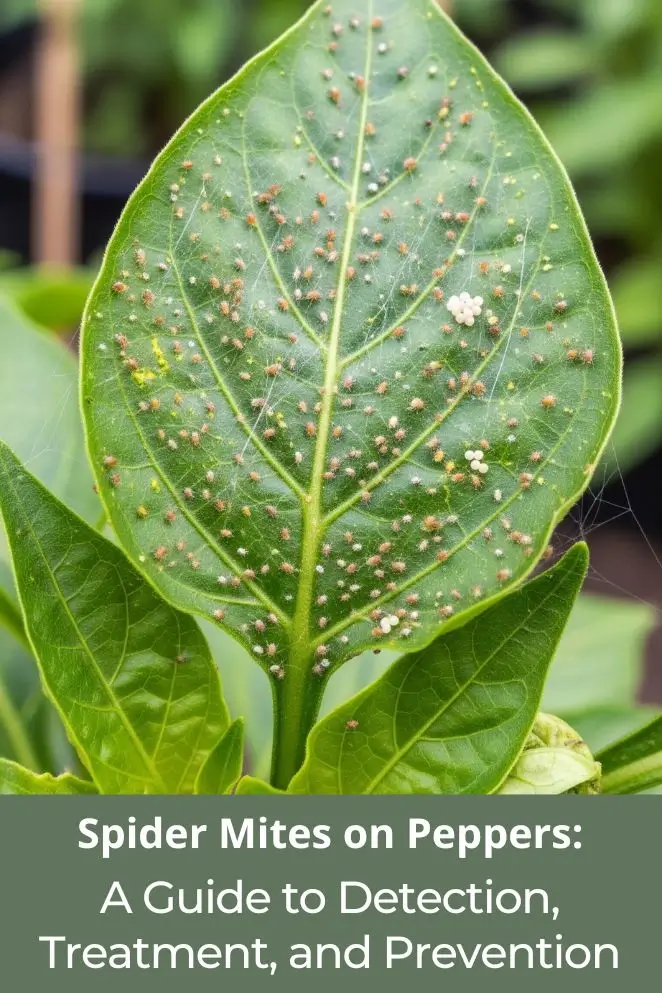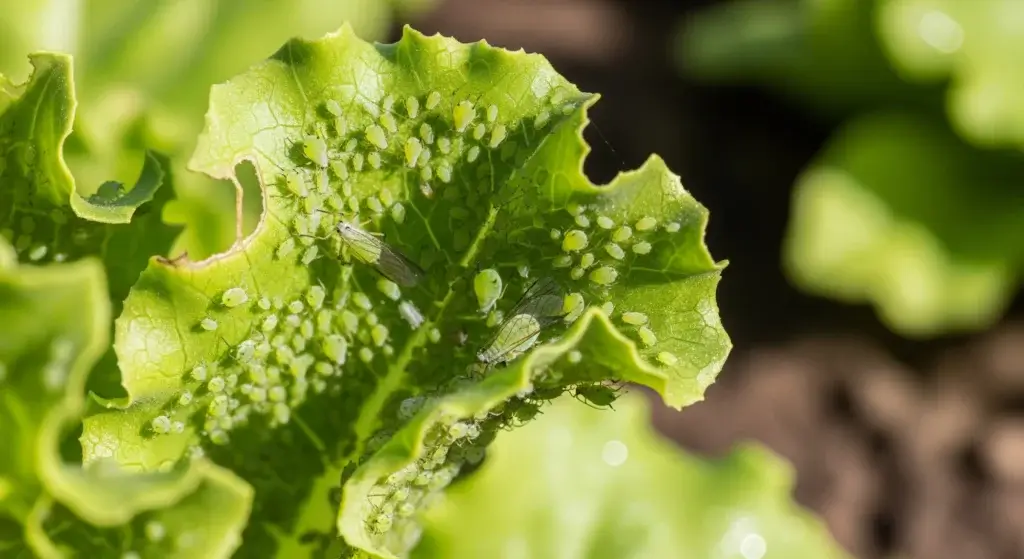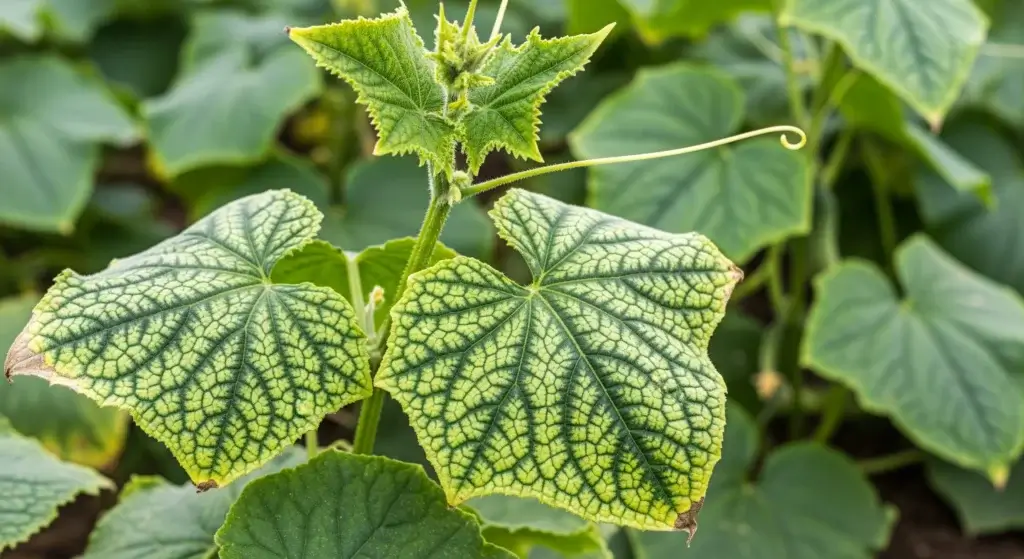
Every pepper grower’s nightmare starts with specks so tiny you can barely see them—spider mites.
These little arachnids can turn your lush pepper plants into a webby mess with yellow leaves and sad harvests faster than you’d think.
The good news? You can fight back. With the right tricks and quick action, you’ll keep your peppers healthy and spider-mite-free.
This guide breaks down how to spot them early and the treatments that actually work.
What Are Spider Mites and Why Do They Target Peppers?
Spider mites aren’t bugs — they’re tiny arachnids, cousins of spiders and ticks.
They’re so small you’ll miss them unless you squint: under 1/20 inch long, with females up to about 1/20 inch (≈1.25 mm).
To your eye a female looks like a tiny moving speck, but don’t let the size fool you.
Despite being microscopic, spider mites do serious damage.
They pierce plant cells and suck out the juices — chlorophyll and other good stuff — leaving that telltale stippling (tiny pale dots) and weakening the plant’s ability to photosynthesize.
Basically they drain the plant’s energy like tiny, ruthless vampires.
Why peppers? They make an easy target:
- Warm growing conditions: Peppers love heat, and so do spider mites — warm weather speeds up mite reproduction.
- Tender foliage: Young pepper leaves are soft and easy for mites to feed on.
- Stress susceptibility: Heat- or drought-stressed peppers are more attractive and less able to fight back.
- Extended growing season: Peppers grow a long time, giving mites plenty of chances to multiply and wreck your crop.
Early Detection: Spotting Spider Mites Before It’s Too Late
Catching spider mites early is everything. Once you see heavy webbing, it’s already a full-blown invasion, and your peppers are on the losing side.
The trick is to spot them before they turn your garden into a webbed horror show.
Visual Inspection Techniques
The Paper Test Method
Grab a sheet of white paper, slide it under a leaf, and give the plant a gentle shake.
Those tiny mites look like ground black pepper dancing on the page.
Magnification Method
Use a 10x magnifying glass or jeweler’s loupe to get a closer look.
You might spot their tiny oval bodies and eight legs.
For two-spotted spider mites, look for the dots on front and back—they’re basically tiny, creepy polka dots.
Key Warning Signs
Early Symptoms:
- Fine stippling—tiny yellow or white dots on leaves
- Leaves looking dusty or dull
- Little red specks or black “pepper grains” on leaf undersides
- Subtle discoloration starting with older leaves
Advanced Symptoms:
- Fine webbing under leaves and between stems
- Black or brown spots from heavy infestations
- Leaves dropping too early
- Overall stressed, weak plants
Prime Locations to Check:
- Undersides of leaves (spider mites love hiding here)
- Leaf joints and stem intersections
- New growth tips
- Areas with poor air circulation
Understanding Spider Mite Species Common on Peppers
Not all spider mites are red little villains—some come in yellow, green, or brown.
Knowing which type you’re dealing with helps you fight them better.
Here are the usual suspects on pepper plants:
Two-Spotted Spider Mites (Tetranychus urticae):
- The most common pepper pest
- Greenish-yellow with two dark spots—tiny but unmistakable if you zoom in
- Loves hot, dry conditions (basically your peppers’ sunbathing days)
- Spins a lot of webbing, turning leaves into mini haunted houses
Red Spider Mites:
- Reddish-orange and easier to see than other mites
- Often pop up in greenhouses
- Super destructive to pepper leaves—like tiny leaf vampires
Proven Treatment Methods for Spider Mite Infestations
When spider mites attack your peppers, you’ve got to move fast.
These little jerks reproduce quickly and can build resistance to chemicals if you’re not careful.
The good news? You can fight them effectively with natural, safe methods that actually work.
Immediate Response Actions
- Isolation Protocol: Any plant showing mite damage should be separated from the healthy crew. Think of it like quarantine—you don’t want the invaders spreading.
- Physical Removal: Snip off heavily infested leaves and stems, going well past the webbing, and toss them in the trash (not your compost!).
Natural and Organic Treatment Options
High-Pressure Water Treatment:
Blast those mites off with a hose or faucet.
The water knocks them and their eggs off the leaves, destroys webs, and increases humidity, which they hate.
Neem Oil Applications:
Neem oil is basically a spider mite kryptonite. It:
- Suffocates adults
- Stops eggs from developing
- Leaves a protective layer for weeks
It’s also safe for beneficial insects if you use it right.
Essential Oil Solutions:
Certain oils mess with mite behavior.
Mix 1 teaspoon mild liquid soap, 10 drops peppermint oil, and 1 quart water.
Other winners include rosemary and thyme oils.
Your peppers end up smelling minty-fresh, and the mites are freaking out.
DIY Soap Solutions:
You can whip up a simple spray using:
- 2 tablespoons mild liquid soap per quart water
- Other add-ins: garlic, chili (capsaicin), peppermint, or rosemary.
Always test a small area first so you don’t burn your plants.
Application Tips for Maximum Effectiveness:
- Spray early morning or evening—cooler temps prevent leaf burn
- Hit the undersides of leaves where mites hide
- Repeat every 3–5 days for 2–3 weeks
- Switch up treatments to prevent mites from building resistance
Prevention Strategies: Keeping Spider Mites Away
Prevention is the cheat code.
Stop mites before they show up and you save time, money, and drama—and your pepper plants stay happy.
Think of it like locking your phone instead of trying to recover it after someone hacks it.
Environmental Management
Humidity Control
Keep humidity up—dry = spider-mite paradise.
- Use drip irrigation or soaker hoses instead of spraying from above (less dust, less stress).
- Put humidity monitors in greenhouses so you’re not guessing.
- Group plants together to build a mini humid zone—plants help each other out.
Air Circulation Enhancement
Space your peppers so air can move between them.
- Use fans in indoor or greenhouse setups to keep air flowing.
- Prune dense foliage to open up airflow.
- Avoid overcrowding garden beds—crowds = stagnant air = mites partying.
Regular Maintenance
- Hose down plants with a strong spray when they can handle it—dust invites mites.
- Inspect plants weekly for early warning signs.
- Remove dead or damaged leaves right away.
- Weed regularly so other plants don’t hide pests.
- Clean tools between uses so you’re not spreading pests around like gossip.
Preventive Spray Programs
Build a routine so mites never get comfortable:
- Monthly neem oil during the growing season.
- Bi-weekly essential-oil sprays (peppermint/rosemary) during high-risk times.
- Regular high-pressure water sprays to keep humidity and cleanliness up.
- Rotate treatments so pests don’t adapt and stop caring.
Treat prevention like brushing your teeth—boring but essential.
Companion Planting Strategies
Some plants throw off vibes mites hate or attract predators that eat them:
- Herbs: mint, basil, rosemary, thyme
- Flowers: marigolds, chrysanthemums, cosmos
- Veggies: onions, garlic, chives
Plant a few buddies and your peppers get natural bodyguards—and your garden looks nicer too.
Biological Control: Nature’s Spider Mite Solutions
Sometimes the best way to fight pests is to let nature do it for you.
Encouraging beneficial insects is like hiring tiny bodyguards for your peppers—they hunt spider mites without you touching chemicals.
Beneficial Predator Insects
Predatory Mites:
- Phytoseiulus persimilis: Spider mite specialist, basically a sniper.
- Neoseiulus californicus: Can handle a variety of climates, very adaptable.
- Amblyseius andersoni: Tough against higher temps, perfect for hot gardens.
Other Natural Enemies:
- Ladybugs (and their larvae—tiny eating machines)
- Lacewing larvae (they look cute but eat mites like candy)
- Minute pirate bugs (yes, pirate bugs—tiny marauders of the mite world)
- Certain thrips species (don’t worry, the right ones help, not hurt)
Creating Predator-Friendly Environments:
- Plant a mix of species so predators have a place to live and hunt.
- Avoid broad-spectrum pesticides—your tiny bodyguards can’t work if you kill them too.
- Keep flowering plants around year-round—they provide food and shelter for predators.
- Make overwintering spots for insects so they stick around next season.
Long-Term Garden Health and Spider Mite Resistance
Building tough pepper plants makes it way harder for spider mites to wreck your crop.
Think of it like training your plants to be little bouncers—strong roots, balanced food, and smart planning keep pests from even thinking about a takeover.
Soil Health Optimization
- Regular soil testing and amendment — know what your soil lacks and fix it; guessing is how gardens die.
- Organic matter incorporation — compost = plant superfood. I toss kitchen scraps into compost and watch my plants glow.
- Proper pH management (6.0–6.8 for peppers) — keep the pH in the sweet spot so nutrients actually work.
- Balanced fertilization avoiding excess nitrogen — too much N = lush soft growth = mite magnet. Don’t feed them a velvet couch.
Variety Selection
- Choose spider mite–resistant pepper varieties when available — some plants come built tougher.
- Plant diverse pepper types to reduce monoculture risks — mixing varieties is like not putting all your eggs in one creepy basket.
- Consider native or adapted varieties for your region — locally adapted plants handle stress better, so mites get bored.
Seasonal Planning
- Time plantings to avoid peak spider mite populations — stagger planting so you’re not handing mites an all-you-can-eat buffet.
- Plan crop rotations to break pest cycles — moving crops around confuses pests and breaks their life cycles.
- Maintain detailed garden records for pattern recognition — track what happened and when; your future self will thank you when you dodge the next outbreak.
Conclusion: Your Action Plan for Spider Mite-Free Peppers
Keep it simple: spot the problem early, act fast, and mix your tactics.
Key points:
- Early detection saves plants — check leaves regularly so tiny problems don’t explode.
- Use multiple approaches — physical removal, natural predators, and safe sprays all working together is the flex.
- Prevention beats treatment — humidity, airflow, clean tools, and companion plants keep mites away.
- Consistency is everything — routine checks and maintenance make your garden boring to pests.
Don’t let microscopic pests ghost your harvest. Start these habits now and your peppers will thank you with a fat, healthy yield.



